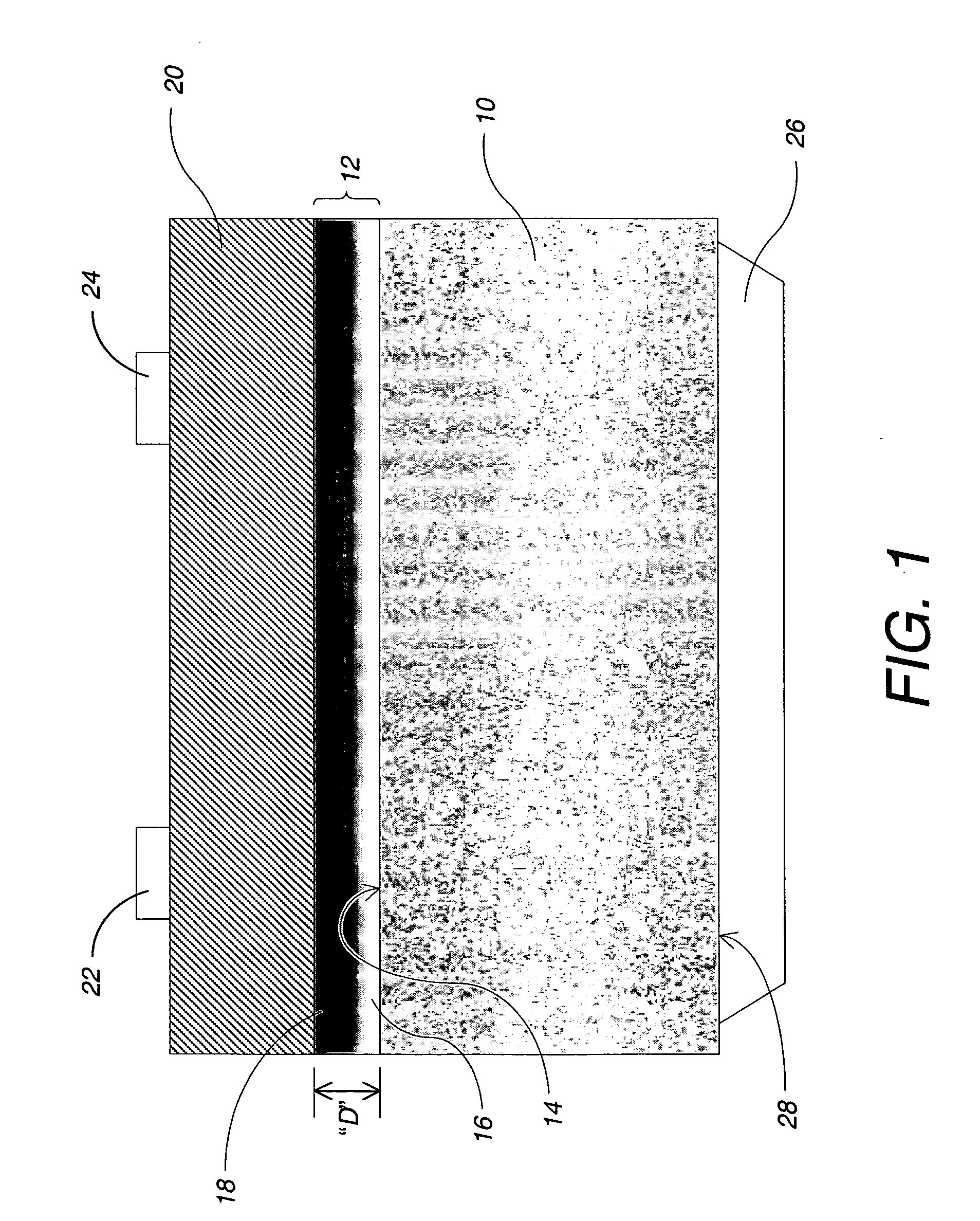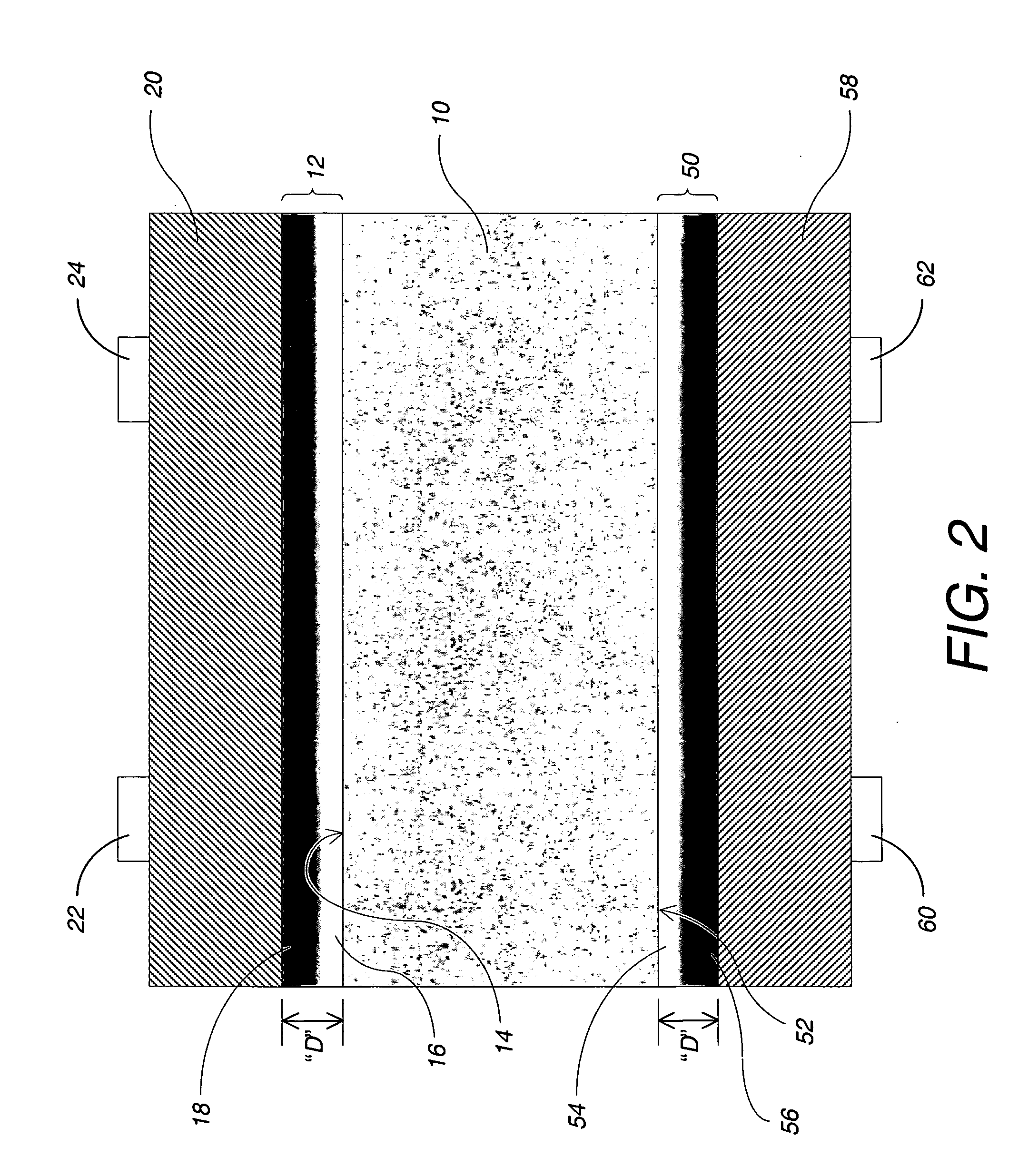Compositionally-graded photovoltaic device and fabrication method, and related articles
- Summary
- Abstract
- Description
- Claims
- Application Information
AI Technical Summary
Problems solved by technology
Method used
Image
Examples
example 1
[0047] This example provides a non-limiting illustration of the fabrication of photovoltaic devices according to some embodiments of the present invention. Monocrystalline or polycrystalline semiconductor substrates of one conductivity type are placed in a plasma reaction chamber (for example: a plasma enhanced chemical vapor deposition system). A vacuum pump removes atmospheric gases from the chamber. The substrates to be processed are preheated to about 120 to about 24° C. A hydrogen plasma surface preparation step is performed prior to the deposition of the compositionally graded layer. Hydrogen (H2) is introduced into the chamber at a flow rate of about 50 to about 500 sccm (standard cubic centimeters per minute). A throttle valve is used to maintain a constant processing pressure in the range of about 200 mTorr to about 800 mTorr. Alternating frequency input power with a power density in the range of about 6 mW / cm2 to about 50 mW / cm2 range is used to ignite and maintain the pla...
PUM
 Login to View More
Login to View More Abstract
Description
Claims
Application Information
 Login to View More
Login to View More - R&D
- Intellectual Property
- Life Sciences
- Materials
- Tech Scout
- Unparalleled Data Quality
- Higher Quality Content
- 60% Fewer Hallucinations
Browse by: Latest US Patents, China's latest patents, Technical Efficacy Thesaurus, Application Domain, Technology Topic, Popular Technical Reports.
© 2025 PatSnap. All rights reserved.Legal|Privacy policy|Modern Slavery Act Transparency Statement|Sitemap|About US| Contact US: help@patsnap.com



